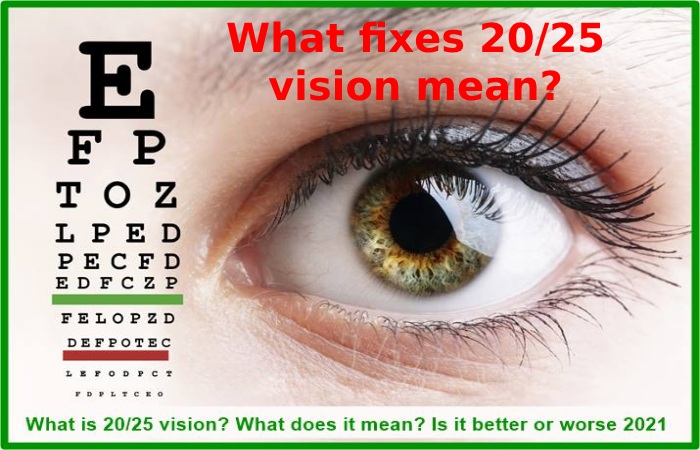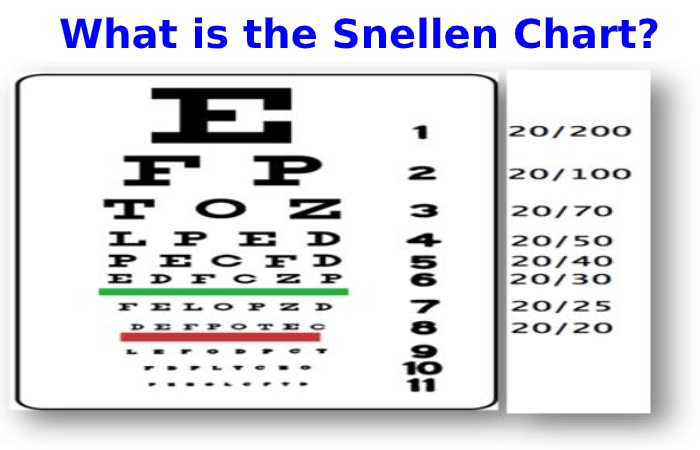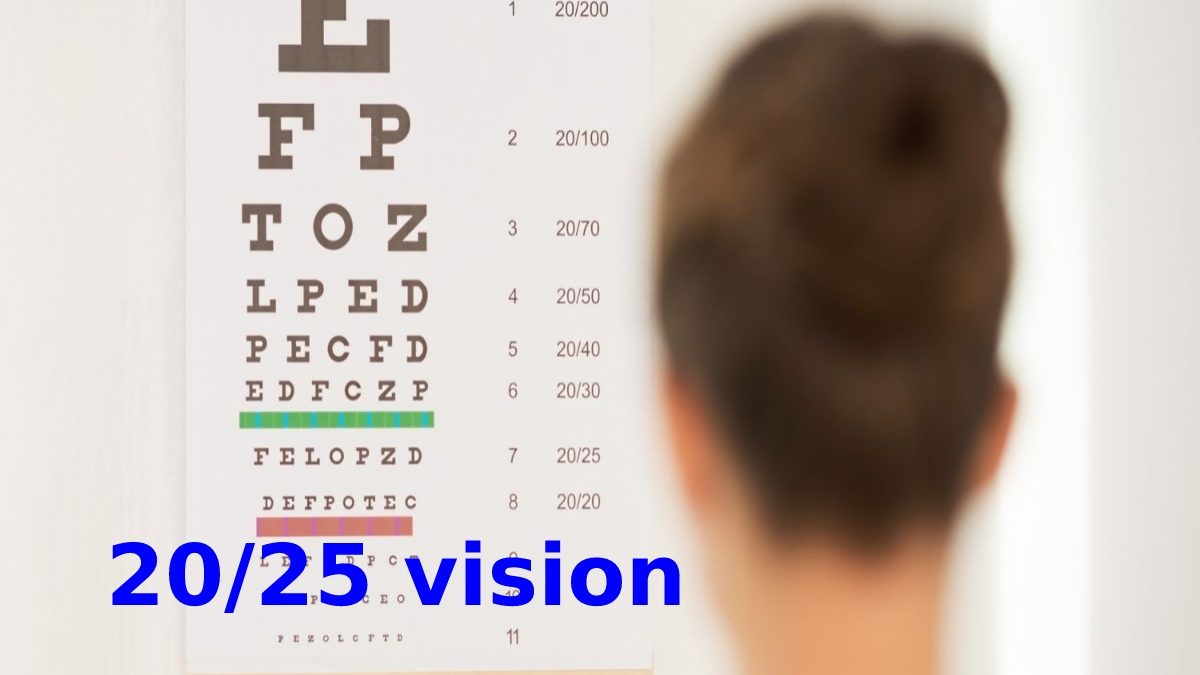Table of Contents
What is 20/25 Vision?
20/25 vision is a dimension used by ophthalmologists to describe your visual acuity. Visual acuity refers to the clarity or sharpness of your vision.
Different factors can affect your visual acuity. For example, eye conditions such as:
nearsightedness (myopia)
Farsightedness (farsightedness)
Astigmatism (irregular curvature of the eyeball)
Presbyopia (age-related lens changes that prevent the eye from focusing on near objects)
But, if you have 20/25 vision, it does not mean that you have poor eyesight. Eye doctors will look at other things to control how well you see. These include eye organization and depth insight.
What fixes 20/25 vision mean?

I hesitation you chomp 20/25 dream; your idea is not as good as average. In other arguments, objects that are clear to someone at a distance of 25 feet are only apparent to you at a distance of 20 feet.
That is different from persons with 20/20 vision, which is considered normal visual acuity.
Is 20/25 vision bad?
No, it’s not bad.
However, you need to consider two aspects:
-
Visual perception
If you take 20/25 vision, it means you have anxiety seeing things at a greater distance than the average person. It could be uncomfortable for you, and glasses could be an easy solution to this vision problem.
-
Standard vision
Ophthalmologists consider 20/20 vision to be the norm. When you wear glasses or contacts, you can effortlessly improve your vision to 20/20.
To have an unrestricted driver’s license, most states require you to have 20/40 vision or better. You consider “legally blind” when your best-corrected vision with glasses or contact lenses is 20/200 or less.
Summary
20/25 vision is a measure of visual acuity. That means that a person can see an object at 20 feet while an average person can see it at 25 feet. While not entirely wrong, some people with 20/25 vision feel uncomfortable and wear corrective glasses.
Is 20/25 vision inferior to 20/20 vision?
Yes. 20/25 vision is poorer than 20/20 vision.
20/25 is just a line worse than 20/20 on the eye chart. In other words, 20/25 vision isn’t impaired and is pretty close to 20/20 vision.
When you have 20/20 vision, you can see what an average person can read on an eye chart when you are 20 bottoms away.
However, you can medicine this problem by wearing glasses or contact lenses prescribed by your ophthalmologist.
Visual acuity is essential. But it is not the only constituent that defines the general ability to see. For example, 20/20 vision reflects the sharpness of an image at a specific distance. Therefore, ophthalmologists also consider other visual skills, such as peripheral vision (side vision), eye coordination, depth perception, etc.
What does the 20/20 vision mean?
Vision 20/20 is considered regular visual insight. Ophthalmologists will use eye charts such as the Snellen chart to measure visual acuity.
20/20 vision does not mean flawless vision. Instead, ophthalmologists consider 20/20 vision to be a standard or average vision.
What is the Snellen Chart?

The Snellen chart is the greatest commonly used eye chart in ophthalmology clinics. It often displays 11 rows of capital letters. As you go down each row, the number of letters increases while their size decreases.
Eye doctors will hold you at a specific distance and read each line aloud to you to assess visual acuity. It covers one eye (for example, the right eye) and defines a minor string of letters you can see. It will then alternate, switching to the other eye.
Your answers will help ophthalmologists understand your level of visual acuity. They can also measure any other eye problems.

